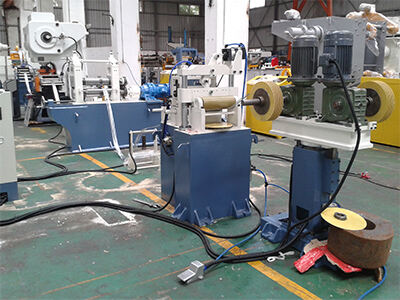The contemporary industry environment requires other things more than providing power delivery. Efficiency, safety and real-time insight are the most important. In this case, the new 2-in-1 feed line concept appears that merges the power conductors, the data communication medium and makes to one, robust cable system. Yet, an additional question arises in the mind automatically, namely, whether they can really deliver on the promise of remote monitoring and operation, with such an integrated solution? The answer is yes, but in a big way and this alters how we address the control of critical systems.
The Foundation: Data Built-In
Standard power wires simply move around electricity. The underlying technology that drove the development of the 2-in-1 feed line is as follows: special data transmission circuits, typically a medium highly trusted like a fiber optic or a dyed shielded twist pair, is nested inside the power conductors. It is this intrinsic data channel that gives access to the remote. It provides the constant non-interrupted communication channel that is effectively of high integrity that helps in connecting the field devices and equipment back to some central control system or cloud based system.
Remote Monitoring: Real-Time Insight at Your Fingertips
With such an integrated data path, the 2-in-1 feed line can also allow full remote monitoring:
1.Operational Status: Keep an eye now and again on the power-on condition of equipment (motors, pumps, sensors), running, sleeping, or faulty.
2.Power Parameters: It should be able to remotely monitor other electrical parameters that comprises electrical parameters of voltage/current/power consumption/and phase balance at the point of contact. This provides invaluable data in both energy management and possible discoveries of any wastage.
3.Environmental Conditions: Sensors can report back to data about temperatures, air humidity or movement, to provide pre-emptive indications of possible problems such as overheating, or mechanical stress.
4.Predictive Maintenance: The continuous feed of operational and environmental data can be processed with advanced algorithms and patterns will be analyzed. This allows predictive maintenance, failure prediction of a component long before it will lead to unplanned downtime, greatly saving costs and wasting time.
Remote Operation: Control from Afar
In addition to the monitoring, the combined data channel makes real remote operation possible:
1.Power Control: Circuit breaker or contactors within the feed line system or its end-points can be controlled by those who have permission to command it remotely. This can be used to cycle equipment safely to power it up and down, to isolate faulty parts or to programmatically shut things down or restart them without being on site.
2.Configuration Adjustments Adjust settings of connected intelligent devices (such as variable frequency drives, or smart sensors) over the data link, optimizing based on the needs or changing conditions.
3.Faster Reaction to Events: The alarm response situation can often be automatically corrected remotely by the operators when one of the alarm conditions is detected during the monitoring process Isolating an alarm, launching a backup system, or changing parameters, operators can take the right action reducing reaction times dramatically in comparison with sending people on-site.
The Tangible Benefits
The capability of a 2-in-1 feed line to provide remote monitoring and operation equates to a major benefit:
Increased Safety: Reduce the necessity of staff to physically enter potentially dangerous electrical areas of work to perform routine checks or fault-Find.
Decreased Downtime: Fast remote diagnosis/intervention and some form of predictive maintenance will more than halve unplanned outages.
Optimized Maintenance: Provide an alternative to expensive, schedule based preventative maintenance and transition to efficient, data-driven predictive and condition-based maintenance.
Subsidized Operational Costs: Minimize trips made by the technicians, minimize energy wastage due to increased monitoring, and increase the serviceable life of the equipment.
Efficiency in Decision-making: The availability of real-time centralized data yields a prospective picture of the health and performance status of the system to make sound decisions.
Implementation and the Future
In attaining strong remote facilities, the cable is not the only requirement. It requires compatible connect endpoints, smart endpoints with the ability to talk about status and accept commands, a safe network protocol and a central easy to use software platform to visualize and control. Yet, to accomplish this ecosystem, the integrated data highway, that is, the physical layer, 2-in-1 feed line, plays the pivotal role of making it practicable and stable.
With the further development of Industrial IoT (IIoT) and Industry 4.0 principles, the importance of 2-in-1 feed line role is made even more central. It is all vested in its ability to support rich data flow, making it ready-made to integrate with AI-driven analytics and further automate optimization and predictive provision.


